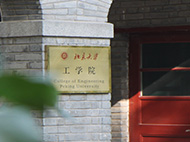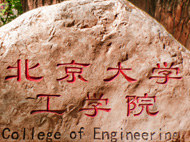报告人:Prof. Uzi Landman (Georgia Institute of Technology)
时间:7月10日(周三)中午15:00-16:00
地点:88858cc永利官网1号楼210会议室(成府路北,力学大院内)
主持人:唐少强教授 88858cc永利官网应用物理与技术研究中心
报告摘要:
Finite materials systems of reduced sizes exhibit specific forms of aggregation, phases, structures and morphologies, quantized electronic shell structures, dimensionality cross-over, and size-dependent evolutionary patterns, which are manifested in unique, non-scalable, size-dependent physical and chemical properties. Indeed, when the dimensions of materials structures are reduced to the nanoscale, emergent phenomena often occurs, that are not commonly expected, or deducible, from knowledge gained at larger sizes. Discovery, characterization, understanding and possible utilization of such emergent behavior of materials in the nanoscale are among the major challenges of modern materials science. Progress in theses directions is greatly facilitated, or even predicated, by synthesis, fabrication, separation and measurements of atomically precise nanostructures, and by theoretical investigations of their unique structural, chemical and physical properties. Computerbased quantum computations, simulations and emulations, are tools of discovery which enable uncovering emergent behavior in the nanoscale. In this talk we employ such simulations, often in conjunction with laboratory experiments, to explore the origins that underlie unique behavior of size-selected materials in the nanoscale, and highlight computational microscopy investigations of nanoscale phenomena in diverse systems. Examples include: nanoscale simulations and stochastic hydrodynamics of liquid jets and bridges, droplet electro-crystallization, nanocatalysis with gas-phase and surface-supported nanocatalysts, nanoclusters and machine-like response of their self-assembled superlattices, symmetry-breaking manifested in formation of highly-correlated Wigner molecules in electron quantum dots, and exact numerical emulations of many-body microscopic Hamiltonians, leading to the employment of finite ultracold atom systems in fundamental studies of quantum magnetism, correlations, entanglement, quantum statistics, matter-wave interferometry, and quantum-optics phenomena emulated with interacting ultracold atoms.









